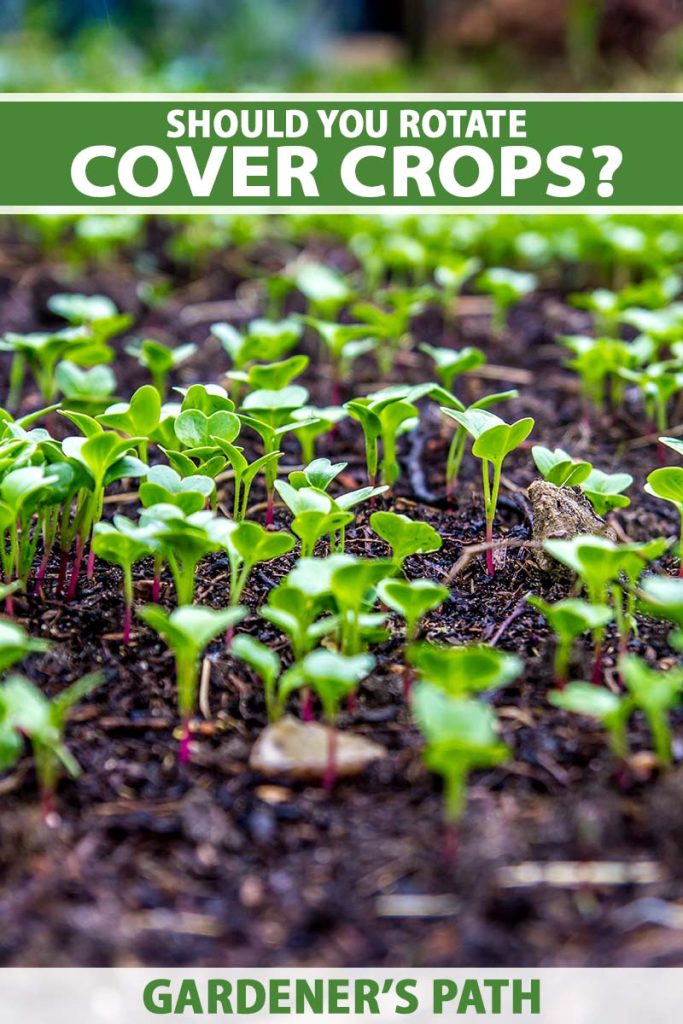How Crop Rotation Can Benefit Soil Structure in Your Garden

Unlocking the Secrets of Soil Health
Soil is the foundation of any flourishing garden. However, many gardeners underestimate the importance of maintaining its structure. One powerful method to enhance soil quality is through crop rotation, an age-old practice that can yield remarkable benefits. By rotating crops, gardeners can not only improve soil health but also increase their yield and reduce pests, ultimately creating a more sustainable gardening environment.
What is Crop Rotation?
Simply put, crop rotation involves changing the types of crops planted in a specific area across growing seasons. This technique goes beyond mere convenience; it incorporates agricultural sustainability principles that farmers and gardeners alike have adopted for centuries. Traditional crop rotation methods include alternating plant families each year, such as rotating corn with beans and then with squash, which is a known practice in Native American agriculture, famously referred to as the “Three Sisters.” Such practices promote various advantages, such as:
- Improved Nutrient Management: Different plants have unique nutrient requirements. For instance, while corn is a heavy nitrogen feeder, legumes such as beans and peas are known for their ability to fix nitrogen in the soil. This symbiotic relationship benefits subsequent crops, creating a nutrient-rich environment.
- Enhanced Soil Structure: Varied root systems can aerate soil and promote water retention. Deep-rooted plants like alfalfa can break up compacted layers of soil, allowing for better air and water infiltration, while shallow-rooted crops like lettuce can cover the surface and help reduce soil erosion.
- Pest and Disease Control: Rotating crops can disrupt pest and pathogen life cycles. Certain insects, like root maggots, thrive on specific plants; by alternating crops, gardeners can diminish the chances of infestations, leading to healthier plant growth.
Benefits of Crop Rotation for Soil Structure
By engaging in crop rotation, gardeners can significantly bolster their soil’s structure. This practice enhances overall soil health, leading to robust plant growth and productive harvests. The benefits include:
- Roots to Penetrate Deeper: Different root systems encourage soil aeration. For example, a combination of taproot plants, like carrots, and fibrous-root plants, like radishes, can enhance soil porosity, allowing essential nutrients and moisture to reach deeper layers.
- Organic Matter Increase: Diverse crops contribute various organic materials to the soil. As crops decompose, they replenish the soil with vital nutrients. Incorporating cover crops, like clover or rye, during the off-season can add organic matter and prevent nutrient loss from leaching.
- Soil Fertility: Rotating legumes can naturally add nitrogen back into the soil. This is critical for maintaining soil fertility without relying heavily on chemical fertilizers, making it both eco-friendly and economically viable for home gardeners.
Understanding these benefits can lead to healthier plants and more bountiful harvests. By taking a holistic approach to gardening through crop rotation, gardeners can unlock the true potential of their soil, paving the way for flourishing gardens. Ready to explore how crop rotation can transform your garden’s soil structure? Let’s delve deeper into this transformative gardening technique and empower your gardening journey with sustainable practices.
DIVE DEEPER: Click here to discover more

Enhancing Soil Structure Through Diverse Crop Practices
As any experienced gardener knows, the condition of your soil is one of the most critical factors influencing the success of your garden. The practice of crop rotation introduces variety in planting that can fundamentally transform soil structure, making it healthier and more productive. By diversifying what is grown in a given area, gardeners can harness the natural benefits of different plant species, which contribute to a more vibrant and resilient ecosystem within their gardens.
Root Diversity and Its Impact
One of the remarkable aspects of crop rotation lies in the diversity of root structures it promotes. Each type of crop has a unique root system, ranging from the deep taproots of root vegetables, like carrots and beets, to the shallow fibrous roots of leafy greens, such as spinach and lettuce. This diversity in root anatomy plays a critical role in improving soil aeration and water infiltration. For instance, deep-rooted plants can effectively break through compacted soil layers, enhancing overall soil porosity which facilitates the movement of air and moisture.
To illustrate the benefits, consider these key advantages of root diversity:
- Aeration: As deep-rooted plants grow and mature, they create pathways in the soil that allow air to circulate more freely, reducing soil compaction. This is particularly advantageous in clay-heavy soils, which can become hard and compacted over time.
- Moisture Conservation: With diverse root systems in place, the soil is better equipped to capture and retain moisture. Some plants draw moisture from deeper soil layers while others utilize surface water, ensuring that the garden remains hydrated during dry spells.
- Nutrient Accessibility: Different roots reach for various nutrients, absorbing them as they grow. This can lead to a more balanced nutrient profile in the soil, making certain minerals available for subsequent crops.
Organic Matter and Nutrient Cycling
Another compelling reason to adopt a crop rotation strategy is its potential for enhancing organic matter within the soil. As plants grow and eventually decompose, they return essential nutrients to the earth. This natural process is vital for maintaining soil fertility and structure. Incorporating cover crops into the rotation, such as clover or vetch, serves to further enrich the soil. These crops not only contribute organic matter but also help prevent soil erosion and nutrient leaching during off-seasons.
The addition of organic matter significantly improves soil’s physical properties, fostering a healthier environment for beneficial microorganisms. The presence of these microorganisms is crucial for nutrient cycling, which helps break down organic materials and make nutrients accessible to plants.
Incorporating crop rotation into your garden management plan can be a game-changer. By focusing on root diversity and organic matter replenishment, you can boost your soil’s structure and health, setting the stage for a thriving garden. Ready to see the positive changes in your soil and plants? Dive deeper into the specifics of how crop rotation can unlock a garden’s full potential.
| Category | Key Features |
|---|---|
| Improved Nutrient Cycling | Crop rotation enhances the cycling of nutrients by alternating crops that utilize different nutrients. This minimizes nutrient depletion and promotes healthier soil. |
| Soil Structure Enhancement | Certain crops, such as legumes, improve soil structure and aeration by increasing organic matter content, which in turn promotes healthier root growth for subsequent plantings. |
Incorporating crop rotation into your gardening practices not only assists in stabilizing soil structure but also introduces a dynamic method for sustainment. For instance, rotating between deep-rooted and shallow-rooted plants can enhance soil aeration. Such practices reduce compaction, allowing air and water to penetrate more easily. Furthermore, the inclusion of leguminous crops in your rotation can fix atmospheric nitrogen, enriching the soil and reducing the need for synthetic fertilizers. This natural process fosters a more balanced ecosystem, encouraging beneficial microorganisms to thrive, which is vital for soil health. Whether you are managing a small garden plot or a larger area, understanding how various crops interact with the soil provides great opportunities for maximizing both yield and soil vitality.
DISCOVER MORE: Click here to learn about the significance of harvest time
Preventing Pest and Disease Buildup
In addition to improving soil structure, crop rotation plays a pivotal role in managing pests and diseases that can wreak havoc in gardens. When the same crops are planted in the same location year after year, they create an ideal environment for pests and diseases to thrive. Many garden pests, such as aphids, caterpillars, and root maggots, have specific plants they prefer for feeding and reproduction. By rotating crops, gardeners can break the lifecycle of these pests, making it harder for them to establish themselves and cause damage.
Reducing Soil-Borne Pathogens
Soil-borne pathogens are another threat to garden health. These microorganisms, which include fungi, bacteria, and nematodes, can persist in the soil even after a crop has been removed. When the same type of crop is repeatedly planted, these pathogens can build up to harmful levels. Rotating crops helps to disrupt the growth cycles of these pathogens. For instance, by moving from a susceptible crop, like tomatoes, to a less susceptible one, such as corn, gardeners can significantly reduce the incidence of diseases like blight or wilt, which target specific plants.
Consider implementing these strategies to enhance your pest management through crop rotation:
- Plan Plant Families: Grouping plants by their botanical family can enhance rotation efficiency. For example, nightshades (tomatoes, peppers, eggplants) should be followed by non-related crops like squash or beans, preventing pests that are specific to nightshades from returning.
- Use Companion Planting: Some gardeners enhance their rotation practices with companion planting, where certain plants are grown together to repel pests naturally. For instance, planting marigolds with vegetables can deter nematodes and aphids.
Encouraging Beneficial Insects
Crop rotation not only helps to reduce harmful pest populations but also encourages a broader variety of beneficial insects, such as pollinators and predatory insects. These allies play a critical role in maintaining garden health by controlling pests and enhancing plant growth. By introducing diverse crops and planting schedules, gardeners can create habitats that attract these beneficial species.
For example, rotating flowering crops with vegetables can provide food sources for pollinators, while also encouraging predatory insects like ladybugs and lacewings, which feed on aphids and other garden pests. The presence of these insects not only contributes to pest management but also bolsters biodiversity, further enhancing soil structure and overall garden health.
Soil Microbial Activity
Finally, it’s important to consider the effect of crop rotation on soil microbial activity. A diverse crop rotation promotes a variety of microorganisms that are beneficial to soil health. Different plants exude various sugars and organic compounds into the soil, nurturing distinct groups of soil microbes. This diversity is critical for maintaining a balanced ecosystem in the soil, as it improves nutrient cycling and enhances the resilience of the garden.
Healthy fungal networks can also flourish in diverse crop environments, working symbiotically with plant roots to improve nutrient uptake. The relationship between plants and soil biota further underscores the significance of crop rotation as a core practice for fostering vibrant soil structure and supporting robust plant growth.
By integrating these practices into your crop rotation strategy, you not only protect your garden from potential threats but also create a thriving ecosystem that supports the overall quality of your soil. Exploring the intricate web of interactions in your garden lays the groundwork for healthier plants and higher yields.
DIVE DEEPER: Click here to discover more about plants that attract pollinators
Conclusion: The Transformative Power of Crop Rotation
As we have explored, crop rotation emerges as a vital strategy for both enhancing soil structure and fostering a healthy garden ecosystem. By thoughtfully alternating crops, gardeners can significantly improve soil aeration and moisture retention, which are essential for root health and nutrient absorption. The practice also mitigates the buildup of pests and soil-borne pathogens, creating a more resilient environment for plants to thrive.
The interplay between varied crops and microbial activity showcases how crop rotation nurtures soil fertility through diverse root systems and organic matter contributions. Moreover, this ecological approach attracts beneficial insects that contribute to natural pest control and pollination, thereby enhancing plant productivity and garden biodiversity. Understanding the critical role of plant families and companion planting in your rotation plan further amplifies these benefits, leading to a more sustainable gardening practice.
Ultimately, integrating crop rotation into your gardening routine is not just about achieving a bountiful harvest but is also about fostering a vibrant ecosystem that champions health and sustainability. As you embark on your gardening journey, consider researching specific crop families and their interactions, and develop a rotation strategy tailored to your garden’s needs. Embrace the transformative power of crop rotation, and witness the remarkable improvements in soil structure, plant vitality, and overall garden productivity.



